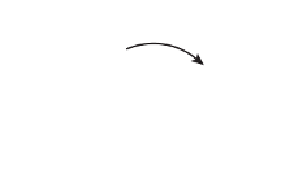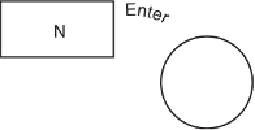Game Development Reference
In-Depth Information
Note
I recommend that you use SmartDraw or your favorite drawing tool to create your own diagram file
as you follow the example. Do your own editing first and then compare what you have to the example
diagrams each step along the way. Refer to the “Using SmartDraw�? section to get started with
SmartDraw.
All TFDs start with an IN box, followed by a flow to the first state of the game that you
want to observe or that you need to reach in order to begin testing. Don't begin every
test with the startup screen unless that's what you are trying to test with the TFD.
Jump right to the point in the game where you want to start doing things (events)
with the game that you want the tester to check (actions, states).
In this TFD, the first state represents the situation where the player has no weapon and
no ammo. Draw a flow to connect the IN box to the
NoGunNoAmmo
state. Per the process
described earlier in this chapter, provide the event name “Enter�? on the flow but don't
provide an ID number yet. Figure 11.5 shows how the TFD looks at this point.
Figure 11.5
Starting the Ammo TFD.
The next step is to model what happens when the player does something in this situation.
One likely response is to find a gun and pick it up. Having a gun creates observable
differences from not having a gun. A gun appears in your inventory, your character is
shown holding the gun, and a crosshair now appears at the center of the screen. These
are reasons to create a separate state for this situation. Keep the naming simple and
call the new state
HaveGun
. Also, in the process of getting the gun, the game may produce
some temporary effects such as playing the sound of a weapon being picked up and
identifying the weapon the display. The temporary effects are represented by an action
on the flow. Name the flow's event
GetGun
and name the action
GunEffects
. The TFD
with the gun flow and new state is shown in Figure 11.6.






